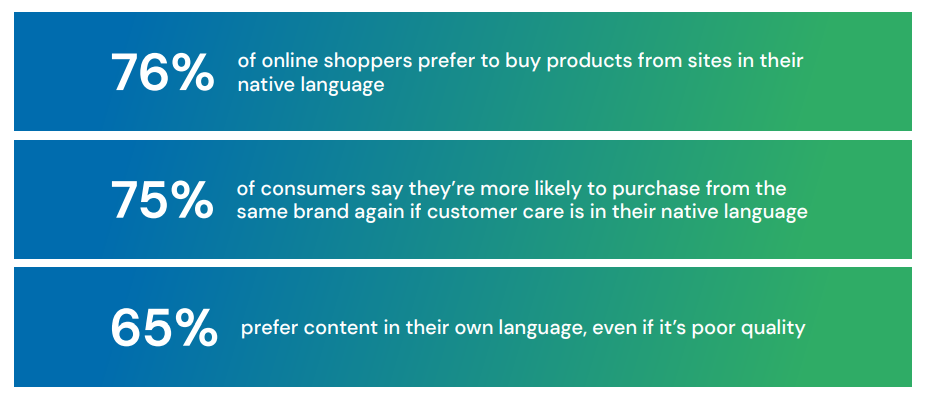A guide to scaling your multilingual brand: Powered by AI, automation and smart localization workflows | Core Media
Artificial Intelligence
B2B online sales are experiencing significant growth, with a global value of $7,907.07 billion in 2022. McKinsey reports that B2B customers utilize over nine channels in their buying journeys, leading to comfortable online transactions exceeding $500,000. This digital trend emphasizes the need for brands to expand globally, prioritizing effective communication and trust-building through culturally sensitive approaches.
Understanding diverse markets is crucial for engaging customers effectively. Multilingual brands require innovative content marketing strategies, particularly content localization. Localization goes beyond translation, encompassing cultural adaptation to meet local needs. To resonate with global audiences, empower local content teams, adopt strategic localization approaches, and leverage Artificial Intelligence for efficient content delivery.
Section 1: Why a content localization strategy is key for growth and scalability
In essence, brands proficient in localization will enjoy rewards. Studies indicate that engaging buyers in their mother tongue can enhance brand recognition, cultivate trust, and nurture loyalty. In content creation, language plays a pivotal role.

Businesses failing to execute localization strategies proficiently risk lagging. Communication errors and misunderstandings may result in diminished brand value. Moreover, the language barrier could deter potential buyers right from the outset.
Section 2: The challenges of implementing a content localization strategy
Navigating the complexities of managing content across various languages, countries, and digital platforms presents multifaceted challenges for global organizations.
Optimizing Translation Workflows:
Localization often involves manual, time-consuming processes where different teams across multiple markets collaborate. This typically includes tasks such as copying and pasting text into spreadsheets, exchanging files via email, and manually integrating translated content into content management systems (CMS). Unfortunately, this approach often results in duplicated efforts, increased risk of errors, and infrequent content updates. Consequently, organizations miss out on opportunities to effectively engage with local audiences and deliver valuable content.
Translating Context, Not Just Language:
Successful localization goes beyond mere language translation. It requires careful consideration of cultural nuances, demographic factors, societal values, and regulatory frameworks. Brands must adapt colors, imagery, symbols, and messaging to align with the cultural norms and preferences of specific regions. For instance, terms like “football” have different interpretations in the USA and European countries.
Moreover, certain images or gestures may be perceived as offensive in one culture but acceptable in another. Brands must also tailor product communication to suit diverse market needs. For example, while climate control features may be critical for agricultural equipment in Europe, they may hold less significance in the Indian market. By understanding these nuances, brands can ensure their messaging resonates effectively and avoids potential miscommunications that could harm brand reputation.
Ensuring Consistency Across Locations:
Maintaining content consistency across multiple regional websites poses an ongoing challenge for global brands. Organizations often employ centralized or decentralized content management strategies. In centralized approaches, content is managed centrally and distributed to regional teams, potentially leading to perceptions of content irrelevance among local teams.
On the other hand, decentralized management allows local teams to pull and adapt content based on their perceived relevance, risking inconsistencies in tone and messaging across different regions. Striking the right balance between centralized control and local autonomy is crucial for ensuring consistent brand messaging and customer experiences across all locations.
Keeping content updated:
Maintaining up-to-date content across global websites is crucial for sustaining engagement and relevance. However, this process presents distinct challenges, especially for manufacturers and companies offering products with long-term investments.
For instance, while luxury fashion brands may easily substitute sold-out items with alternatives, manufacturers face the ongoing task of updating content to reflect new features, services, or upgrades. This entails meticulous tracking of content usage within the organization, ensuring that relevant stakeholders are promptly notified of any changes, and assigning responsibility for implementing updates.
Discover in-depth insights and practical solutions for overcoming localization challenges in global content management. Dive into our comprehensive guide to learn more and access actionable strategies. Continue reading to elevate your brand’s global presence and download the guide now!
The Table of Contents of “A guide to scaling your multilingual brand: Powered by AI, automation and smart localization workflows”:
- Section 1: Why a content localization strategy is key for growth and scalability
- Section 2: The challenges of implementing a content localization strategy
- Section 3: 3 best practices for a successful content localization strategy
- Case Study: Scaling product content to meet the needs of a growing global audience
Number of Pages:
- 13 pages
Pricing:
- Free






